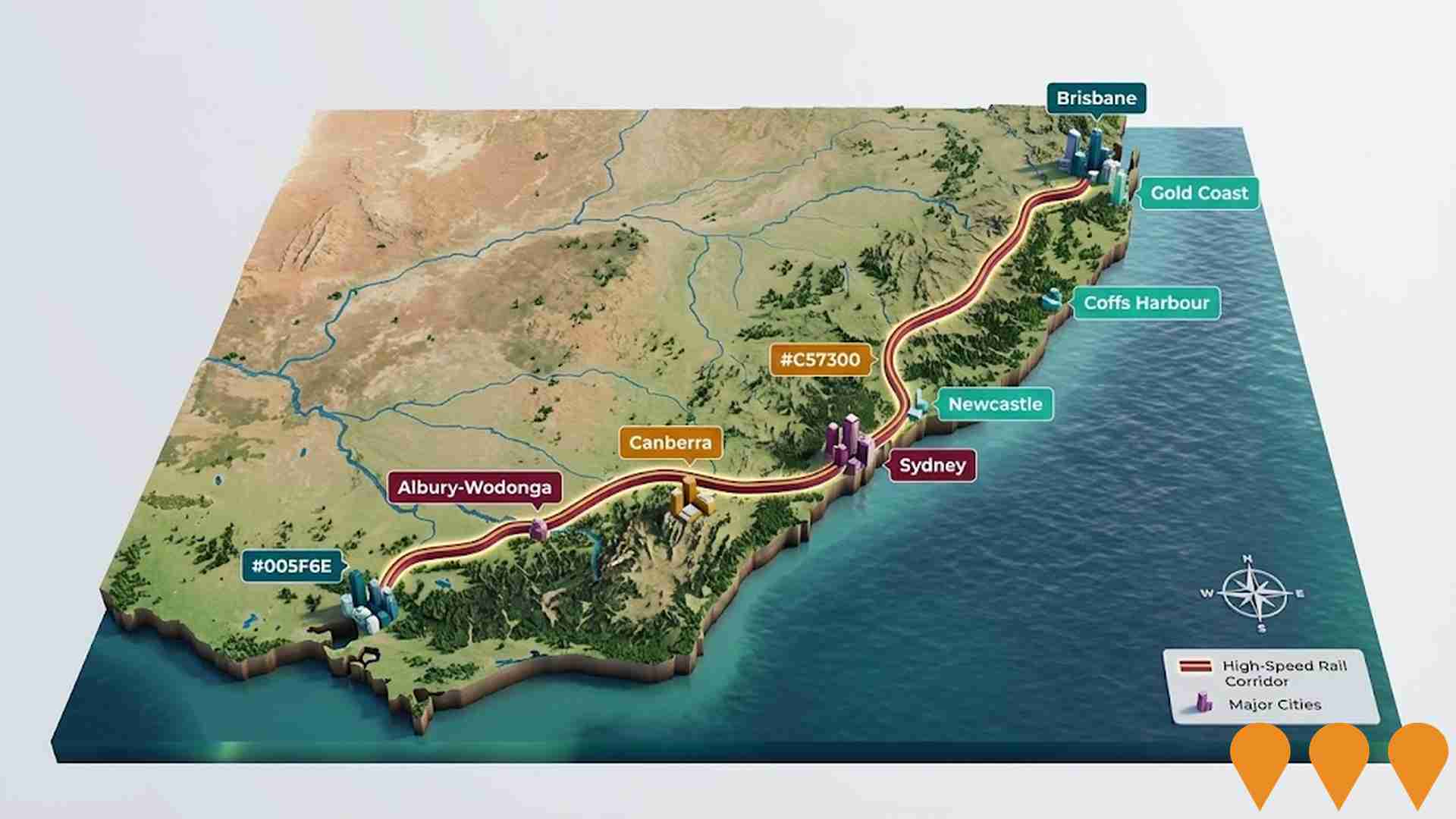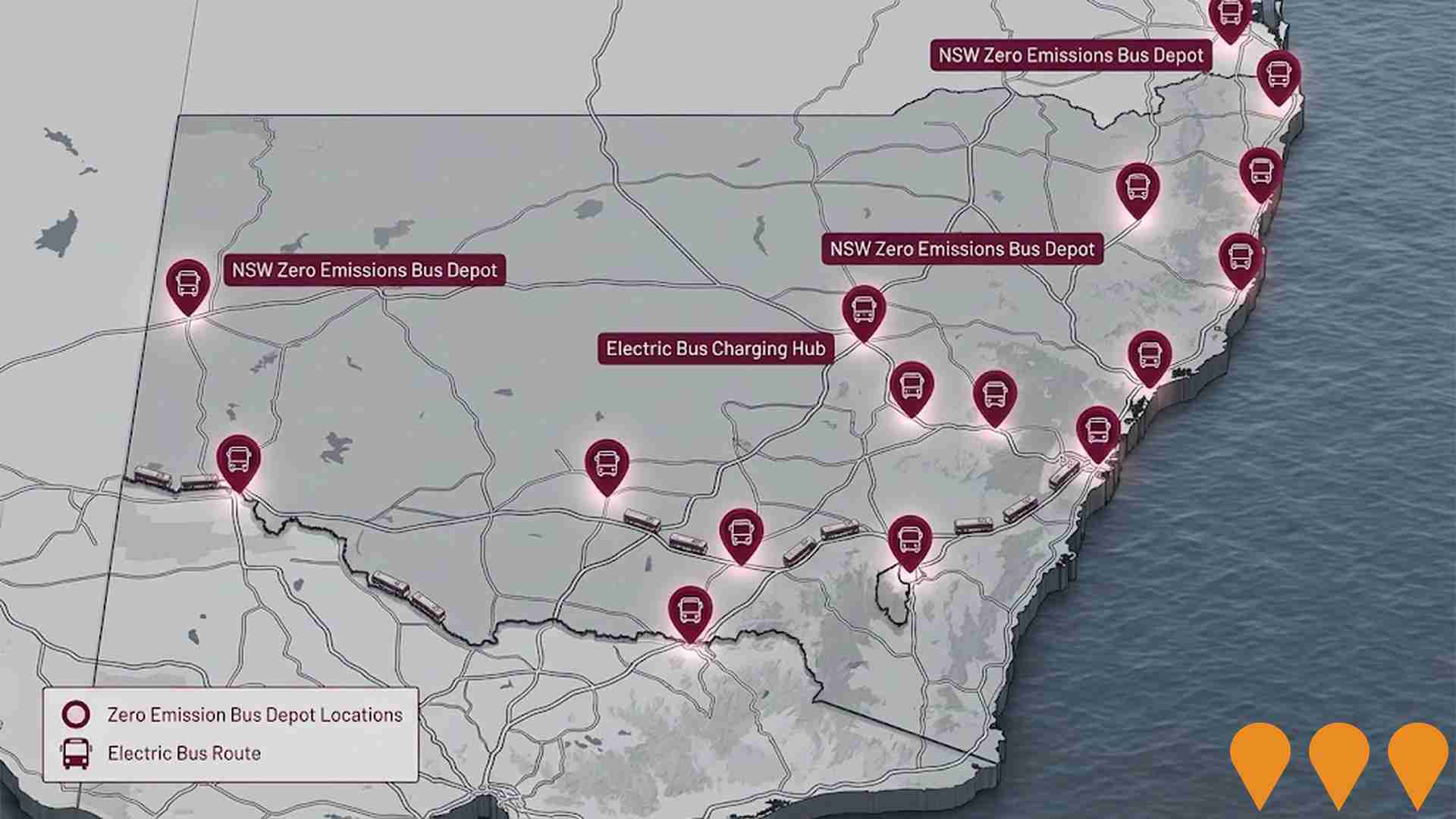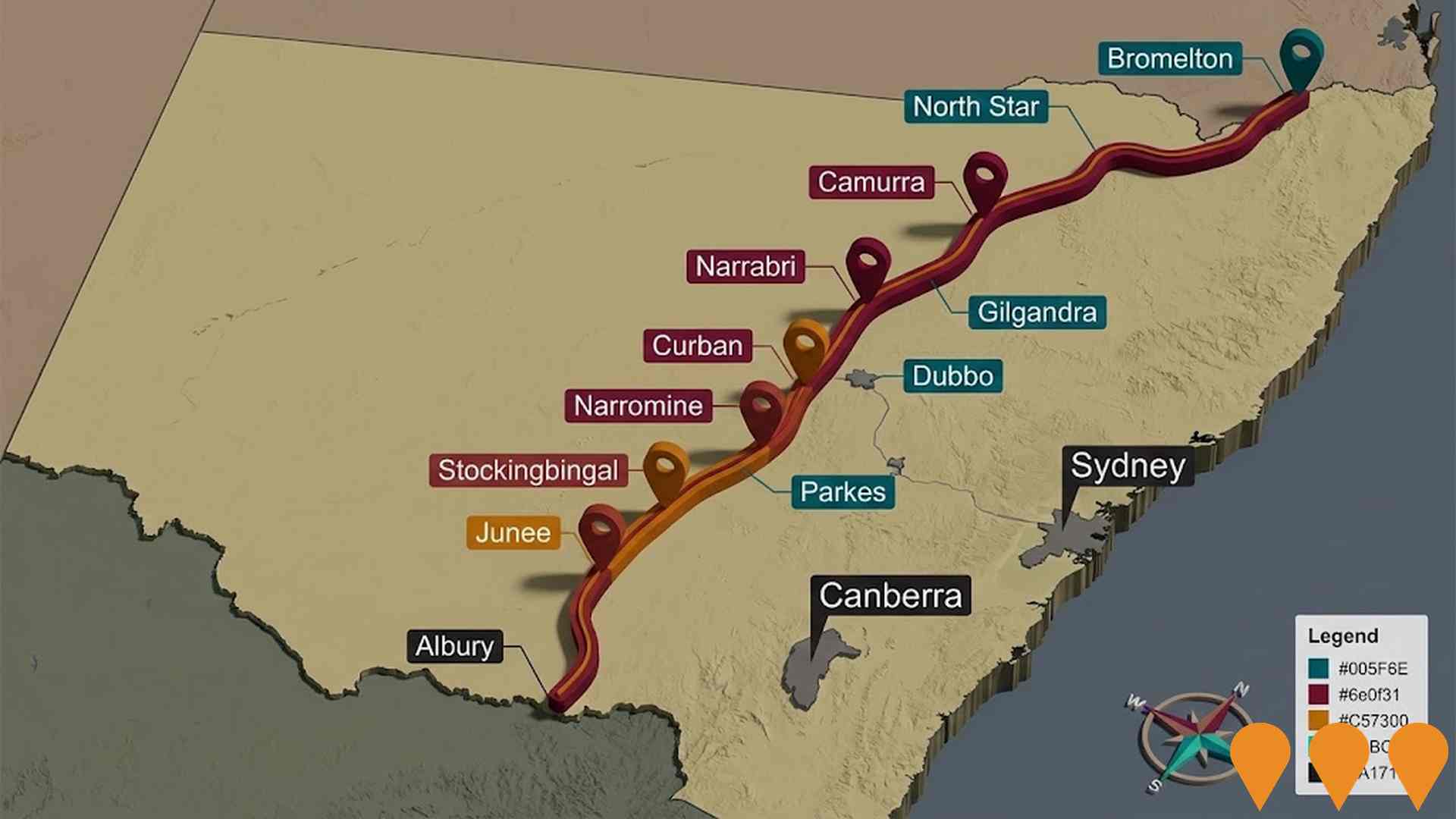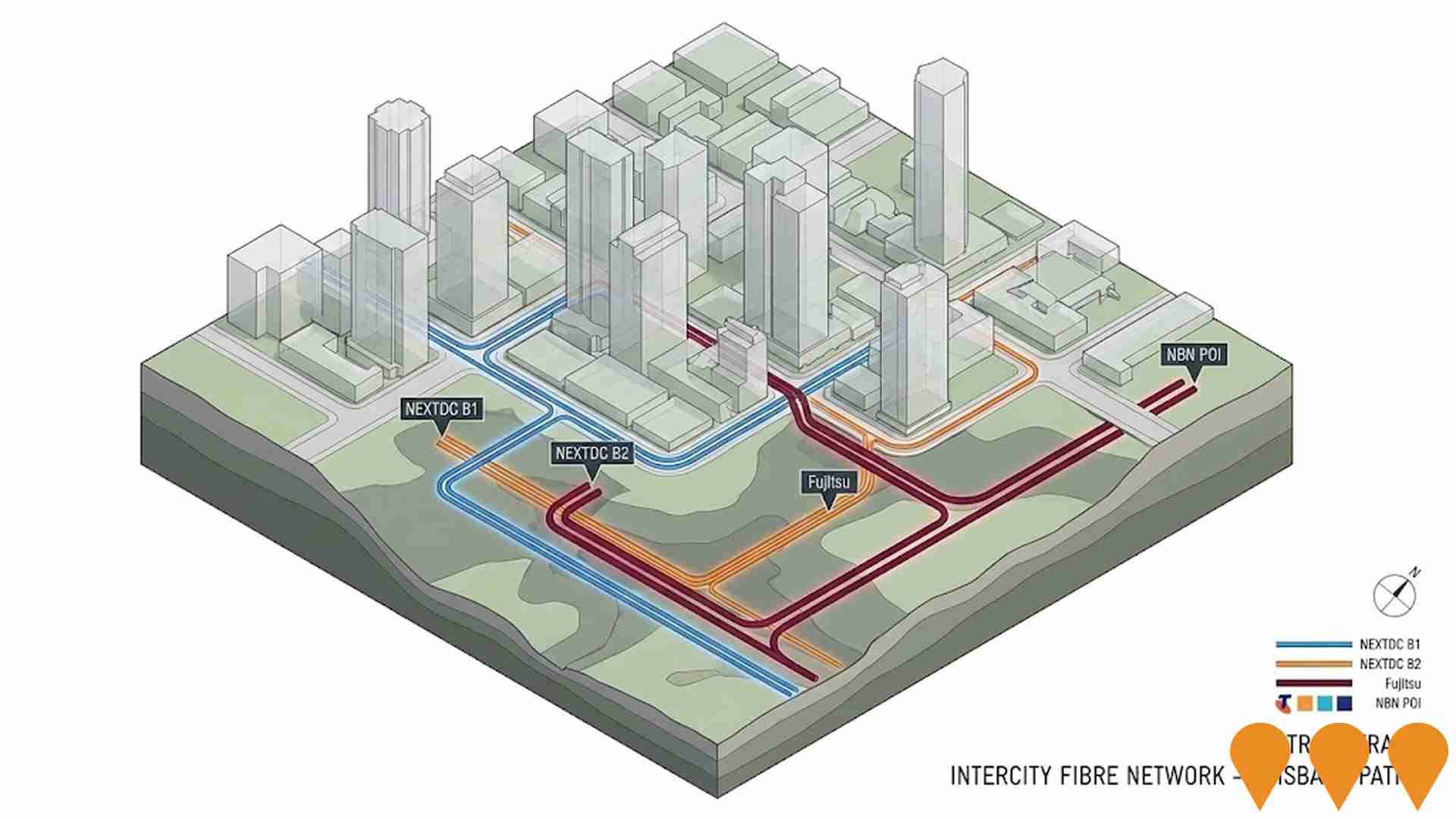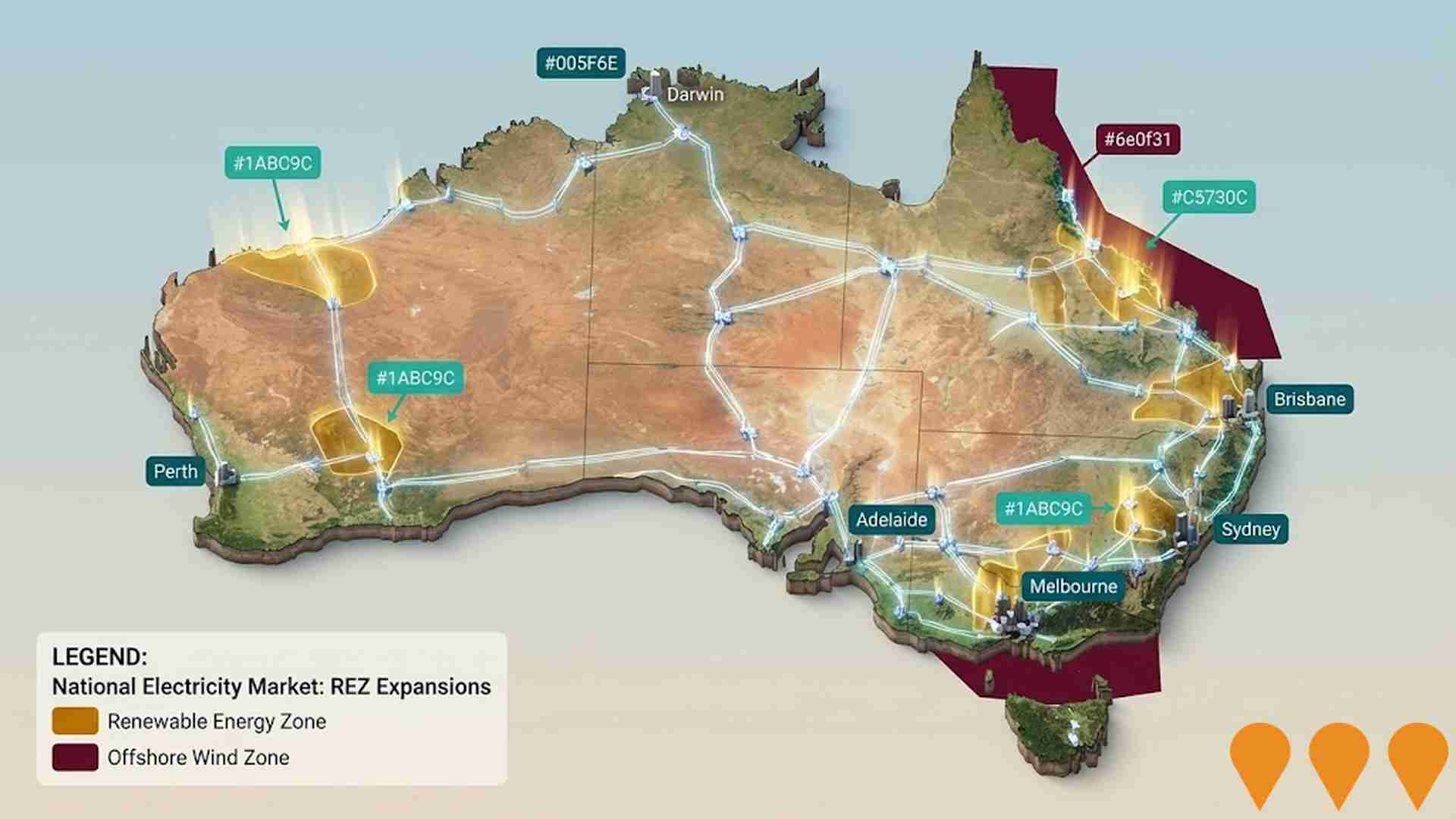Chart Color Schemes
est. as @ -- *
ABS ERP | -- people | --
2021 Census | -- people
Sales Activity
Curious about local property values? Filter the chart to assess the volume and appreciation (including resales) trends and regional comparisons, or scroll to the map below view this information at an individual property level.
Find a Recent Sale
Sales Detail
Population
Population growth drivers in Narooma - Bermagui are strong compared to national averages based on AreaSearch's ranking of recent, and medium to long-term trends
Narooma - Bermagui's population was 9,888 as of the 2021 Census. By Nov 2025, it is estimated to be around 10,051, reflecting an increase of 163 people (1.6%) since the Census date. This increase is inferred from ABS estimates and validated new addresses. The population density as of Nov 2025 is 39 persons per square kilometer. Over the past decade, ending in June 2024, Narooma - Bermagui showed a compound annual growth rate of 1.0%, outpacing its SA3 area. Interstate migration contributed approximately 76.3% of overall population gains during recent periods.
AreaSearch uses ABS/Geoscience Australia projections for each SA2 area released in 2024 with a base year of 2022, and NSW State Government's SA2 level projections for areas not covered by this data, released in 2022 with a base year of 2021. These projections show that the population is expected to increase by 1,118 persons to 2041, reflecting an increase of 10.8% over the 17-year period.
Frequently Asked Questions - Population
Development
Recent residential development output has been above average within Narooma - Bermagui when compared nationally
Narooma-Bermagui recorded approximately 45 residential property approvals annually. Over the past five financial years, from FY21 to FY25229 homes were approved, with a further 8 approved in FY26 as of now. On average, 2.1 people moved to the area per new home constructed over these years, indicating strong demand supporting property values.
The average construction cost value of new homes was $327,000. This year, $9.5 million in commercial approvals have been registered, demonstrating consistent commercial investment activity. Compared to the Rest of NSW, Narooma-Bermagui has 19.0% less new development per person and ranks at the 56th percentile nationally when measured against other areas assessed.
The area's new building activity comprises 81.0% detached houses and 19.0% medium to high-density housing, preserving its low-density nature and attracting space-seeking buyers with an average of around 277 people per dwelling approval. Population forecasts project Narooma-Bermagui will gain 1,083 residents by 2041. At current development rates, new housing supply should comfortably meet demand, providing favorable conditions for buyers and potentially supporting growth beyond current population projections.
Frequently Asked Questions - Development
Infrastructure
Narooma - Bermagui has emerging levels of nearby infrastructure activity, ranking in the 35thth percentile nationally
Area infrastructure changes significantly impact performance. AreaSearch identified four projects likely affecting the area. Key projects are Bermagui Water Security Project, Sapphire Cove Estate - Bermagui, Riverbend Bermagui, and Princes Highway Safety And Capacity: Nowra, NSW To Victorian Border. Relevant details are listed below.
Professional plan users can use the search below to filter and access additional projects.
INFRASTRUCTURE SEARCH
 Denotes AI-based impression for illustrative purposes only, not to be taken as definitive under any circumstances. Please follow links and conduct other investigations from the project's source for actual imagery. Developers and project owners wishing us to use original imagery please Contact Us and we will do so.
Denotes AI-based impression for illustrative purposes only, not to be taken as definitive under any circumstances. Please follow links and conduct other investigations from the project's source for actual imagery. Developers and project owners wishing us to use original imagery please Contact Us and we will do so.
Frequently Asked Questions - Infrastructure
Low and Mid-Rise Housing Policy
State-wide NSW planning reforms via amendments to the State Environmental Planning Policy to enable more diverse low and mid-rise housing (dual occupancies, terraces, townhouses, manor houses and residential flat buildings up to 6 storeys) in well-located areas within 800 m of selected train, metro and light-rail stations and town centres. Stage 1 (dual occupancies in R2 zones statewide) commenced 1 July 2024. Stage 2 (mid-rise apartments, terraces and dual occupancies near stations) commenced 28 February 2025. Expected to facilitate up to 112,000 additional homes over the next five years.
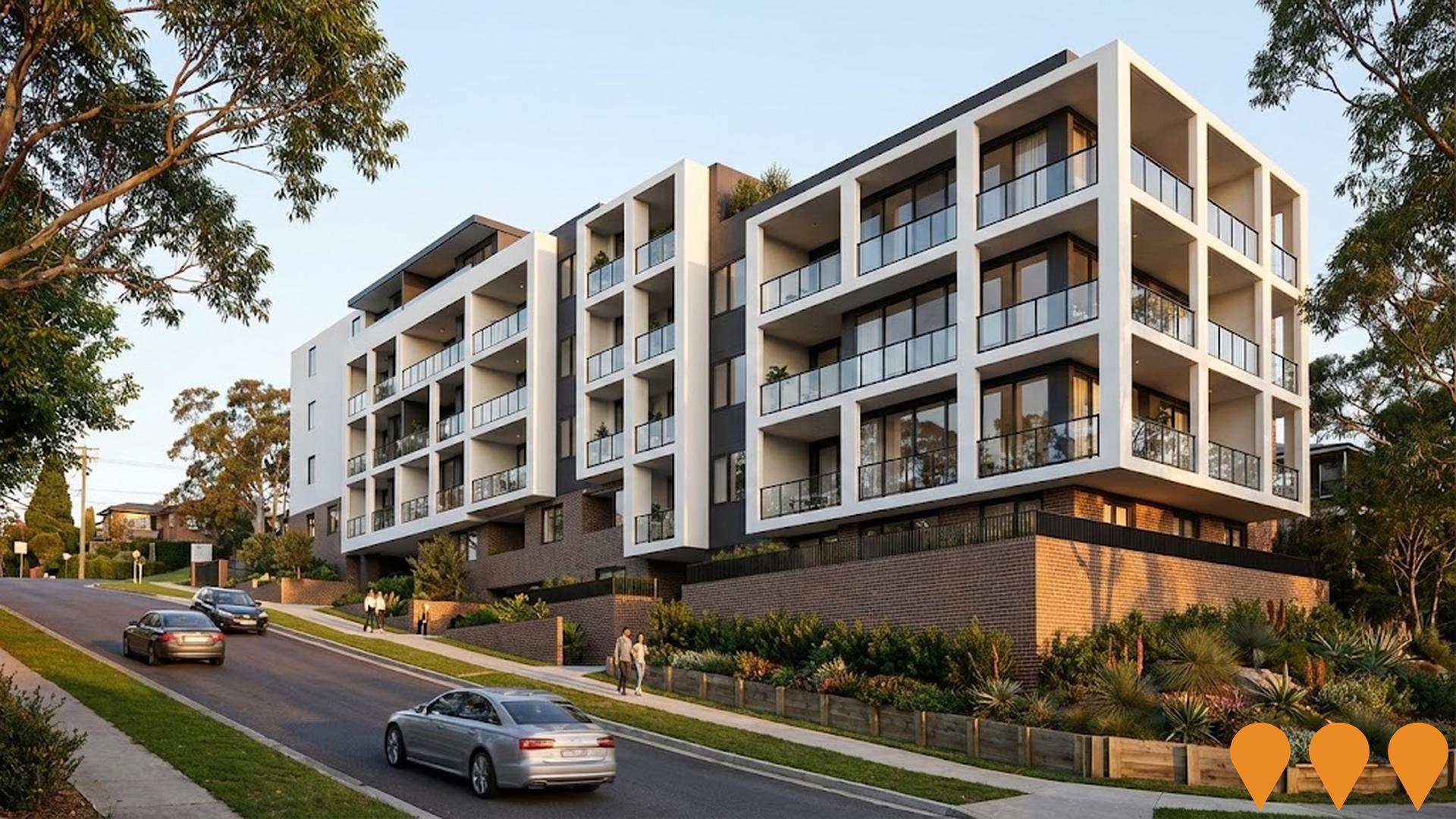
NSW Renewable Energy Zones (REZ) Program
NSW is delivering five Renewable Energy Zones (Central-West Orana, New England, South West, Hunter-Central Coast and Illawarra) to coordinate new wind and solar generation, storage and high-voltage transmission. The program is led by EnergyCo NSW under the Electricity Infrastructure Roadmap. Construction of the first REZ (Central-West Orana) transmission project commenced in June 2025, with staged energisation from 2028. Across the program, NSW targets at least 12 GW of new renewable generation and 2 GW of long-duration storage by 2030.
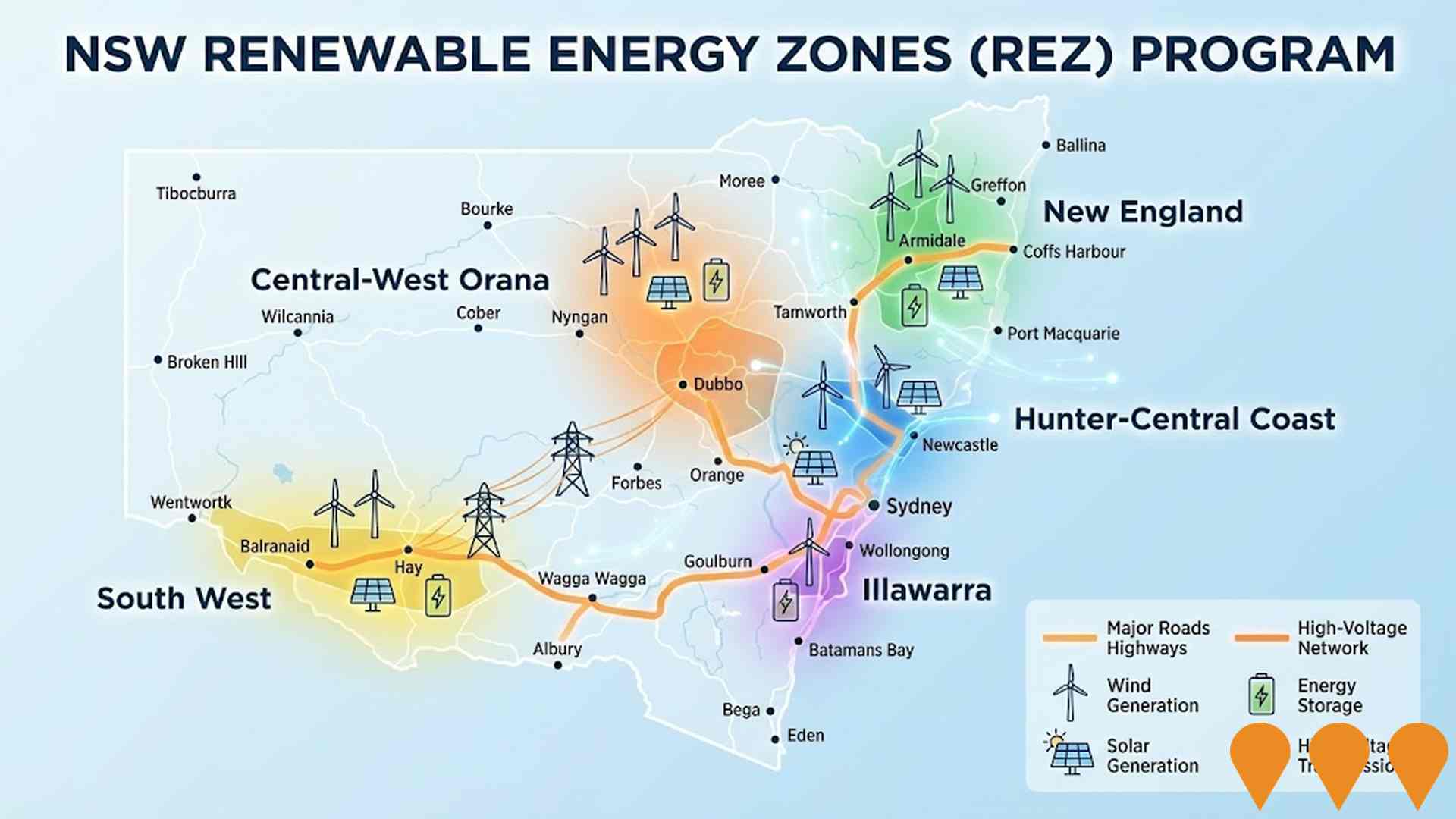
Enabling Infrastructure for Hydrogen Production
Australia has completed the National Hydrogen Infrastructure Assessment (NHIA) to 2050 and refreshed its National Hydrogen Strategy (2024). The programmatic focus has shifted to planning and enabling infrastructure through measures such as ARENA's Hydrogen Headstart and the Hydrogen Production Tax Incentive (from April 2025). Round 2 of Hydrogen Headstart consultation occurred in 2025. Collectively these actions aim to coordinate investment in transport, storage, water and electricity inputs linked to Renewable Energy Zones and priority hubs, supporting large-scale renewable hydrogen production and future export supply chains.
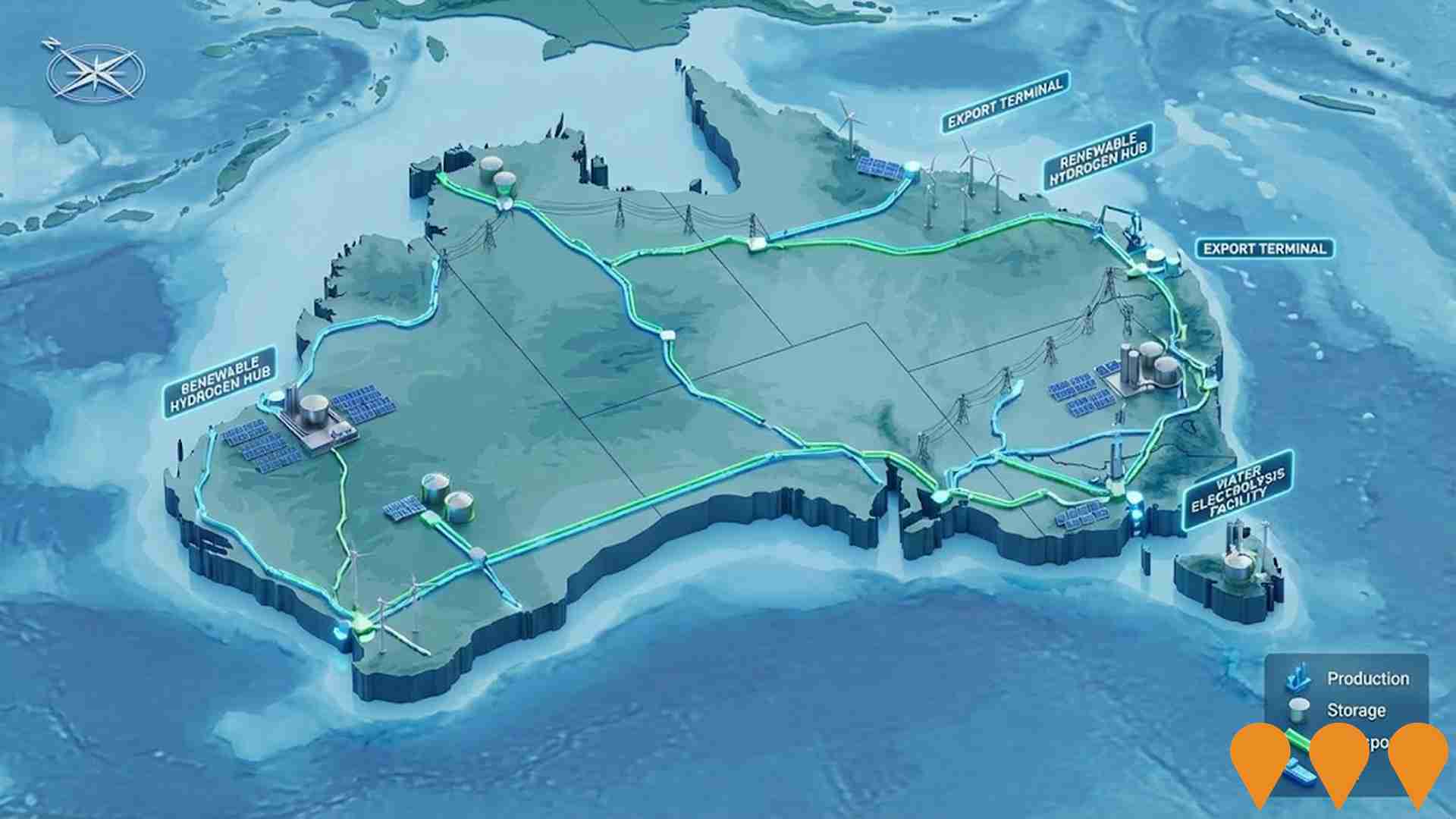
Bermagui Water Security Project
NSW Government's Water Infrastructure NSW is preparing a preliminary business case to improve Bermagui's town water security during drought. Options under assessment include adjusting Brogo Dam reserve settings, redesigning or relocating the town offtake, testing alternative weir pool volumes, and constructing a low weir at the offtake to maintain pump depth during low flows. The project received joint NSW and Australian Government funding for the preliminary business case, with the department indicating a target to submit the preliminary business case in Q2 2026 before moving to a full business case.
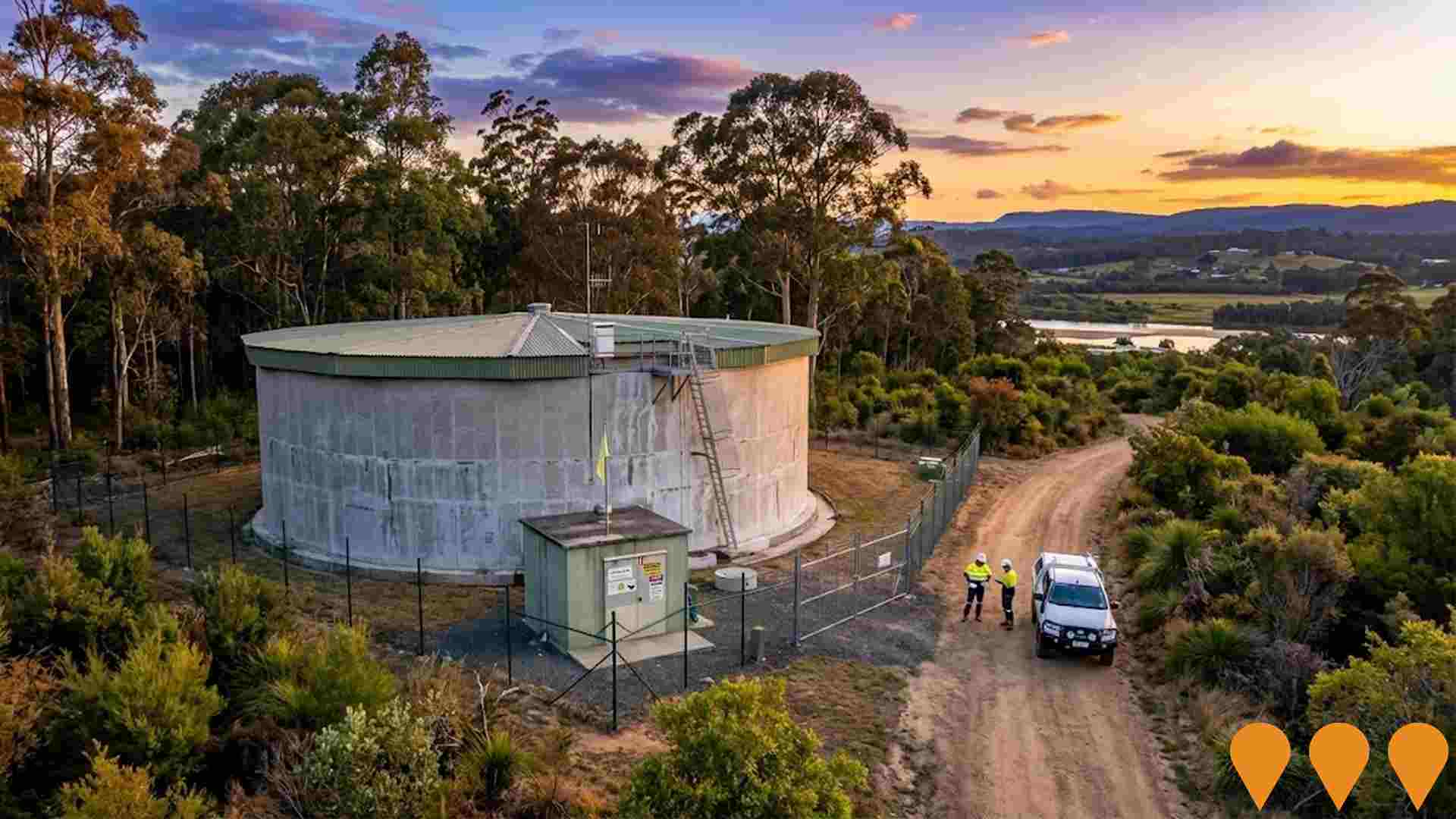
Bulk Water Supply Security
Nationwide program led by the National Water Grid Authority to improve bulk water security and reliability for non-potable and productive uses. Activities include strategic planning, science and business cases, and funding of state and territory projects such as storages, pipelines, dam upgrades, recycled water and efficiency upgrades to build drought resilience and support regional communities, industry and the environment.

NSW Heavy Vehicle Rest Stops Program (TfNSW)
Statewide Transport for NSW program to increase and upgrade heavy vehicle rest stopping across NSW. Works include minor upgrades under the $11.9m Heavy Vehicle Rest Stop Minor Works Program (e.g. new green reflector sites and amenity/signage improvements), early works on new and upgraded formal rest areas in regional NSW, and planning and site confirmation for a major new dedicated rest area in Western Sydney. The program aims to reduce fatigue, improve safety and productivity on key freight routes, and respond to industry feedback collected since 2022.
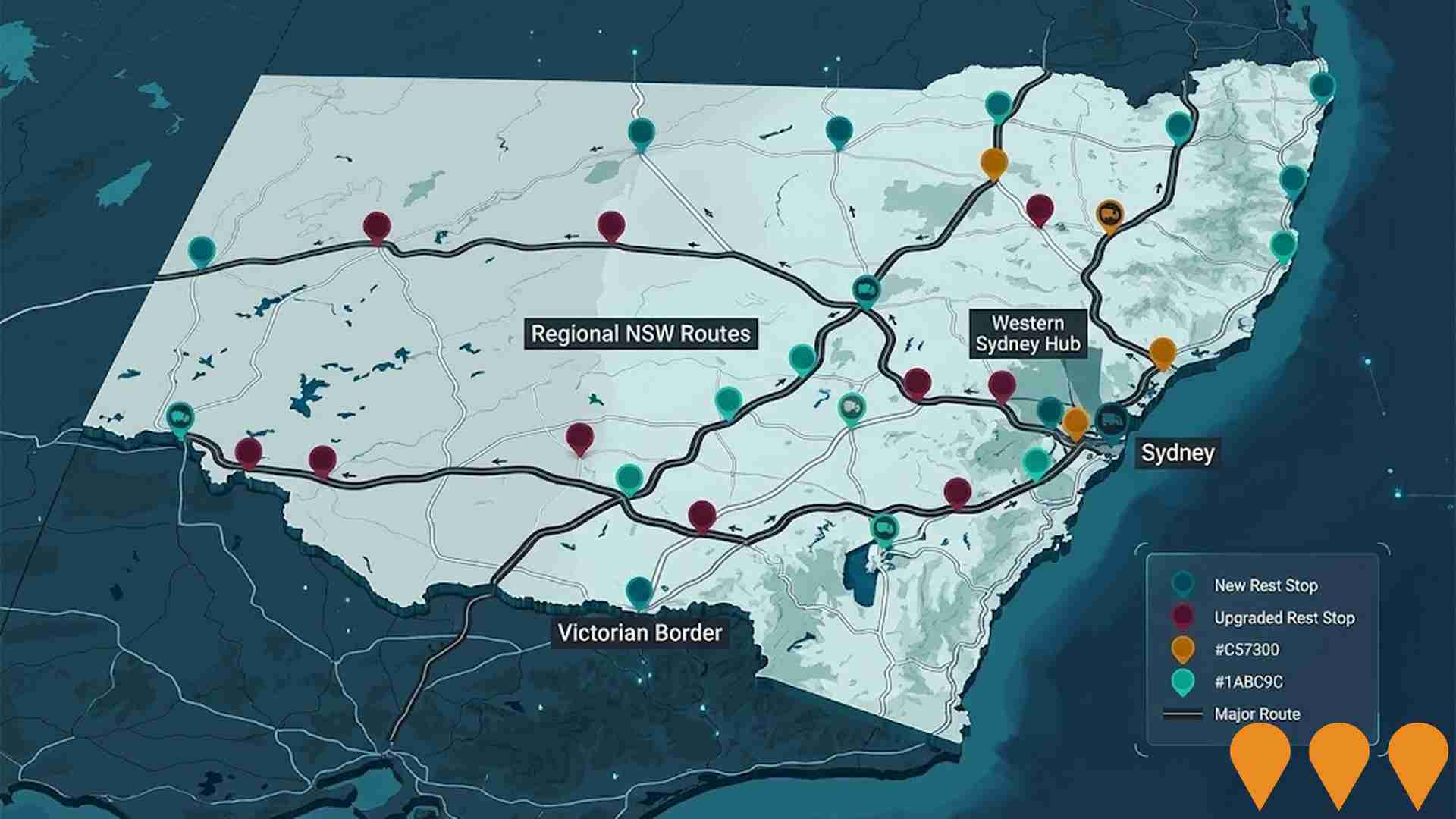
Sapphire Cove Estate - Bermagui
Sapphire Cove is a new master-planned residential development in Bermagui, comprising over 24 hectares. It offers 550m2 - 900m2 residential lots and is situated adjacent to the immaculate Bermagui Golf Course. Registration for the development is imminent, and it is setting a benchmark for new residential developments on the NSW Coast.

Riverbend Bermagui
Riverbend Bermagui is a Balinese-inspired luxury mature-living village by Metacap. It will feature 162 architectural 2- and 3-bedroom homes nestled amidst 29 hectares of coastal beauty, with over 16.5 hectares preserved as natural green space. The development includes resort facilities and is designed for over 60s living. A comprehensive development assessment has been lodged, and stage one construction is planned for late 2024, with homes ready by mid-2025.

Employment
Employment conditions in Narooma - Bermagui face significant challenges, ranking among the bottom 10% of areas assessed nationally
Narooma-Bermagui has a skilled workforce with tourism and hospitality being prominent sectors. As of June 2025, the unemployment rate is 5.7%.
There are 3654 residents in work while the unemployment rate is 2.0% higher than Rest of NSW's rate of 3.7%. Workforce participation lags at 41.0%, compared to Rest of NSW's 56.4%. Employment is concentrated in health care & social assistance, accommodation & food, and retail trade. The area specializes in accommodation & food with an employment share 1.7 times the regional level.
Conversely, manufacturing shows lower representation at 3.6% versus the regional average of 5.8%. Limited local employment opportunities are indicated by Census data showing working population vs resident population. From June 2024 to June 2025, labour force decreased by 3.6%, employment declined by 5.1%, causing unemployment to rise by 1.5 percentage points. In contrast, Rest of NSW experienced employment decline of 0.1% and labour force growth of 0.3%. Jobs and Skills Australia forecasts national employment growth at 6.6% over five years and 13.7% over ten years. Applying these projections to Narooma-Bermagui's employment mix suggests local growth of approximately 6.4%% over five years and 13.2% over ten years, based on simple weighting extrapolation for illustrative purposes only.
Frequently Asked Questions - Employment
Income
Income metrics place the area in the bottom 10% of locations nationally according to AreaSearch analysis
Narooma-Bermagui's median income among taxpayers was $37,558 in financial year 2022. The average income stood at $51,133 during the same period. These figures are lower than those of Rest of NSW, which were $49,459 and $62,998 respectively. By September 2025, estimates suggest median and average incomes could reach approximately $42,294 and $57,581 respectively, based on a 12.61% growth in wages since financial year 2022. According to Census 2021 data, household, family, and personal incomes in Narooma-Bermagui all fall between the 4th and 10th percentiles nationally. The earnings profile shows that 31.0% of locals (3,115 people) predominantly earn between $400 and $799, unlike the region where the $1,500 to $2,999 category is most prevalent at 29.9%. Despite modest housing costs allowing for 87.0% income retention, total disposable income ranks at just the 7th percentile nationally.
Frequently Asked Questions - Income
Housing
Narooma - Bermagui is characterized by a predominantly suburban housing profile, with above-average rates of outright home ownership
In Narooma-Bermagui, as per the latest Census, 83.4% of dwellings were houses while 16.5% comprised semi-detached homes, apartments and other types. This compares to Non-Metro NSW's figures of 84.3% houses and 15.7% other dwellings. Home ownership in Narooma-Bermagui stood at 58.5%, with mortgaged properties at 20.7% and rented ones at 20.9%. The median monthly mortgage repayment was $1,500, lower than Non-Metro NSW's average of $1,517. Median weekly rent in the area was recorded at $290, compared to Non-Metro NSW's $320. Nationally, Narooma-Bermagui's mortgage repayments were significantly lower than the Australian average of $1,863, while rents were substantially below the national figure of $375.
Frequently Asked Questions - Housing
Household Composition
Narooma - Bermagui features high concentrations of lone person households, with a lower-than-average median household size
Family households account for 64.0% of all households, including 15.9% couples with children, 39.5% couples without children, and 8.3% single parent families. Non-family households make up the remaining 36.0%, with lone person households at 33.3% and group households comprising 2.6% of the total. The median household size is 2.1 people, which is smaller than the Rest of NSW average of 2.2.
Frequently Asked Questions - Households
Local Schools & Education
Educational outcomes in Narooma - Bermagui fall within the lower quartile nationally, indicating opportunities for improvement in qualification attainment
Educational qualifications in the Narooma-Bermagui region show that 22.9% of residents aged 15 years and over hold university degrees, compared to 32.2% in New South Wales. The most common qualifications are bachelor's degrees at 15.1%, followed by postgraduate qualifications at 4.4% and graduate diplomas at 3.4%. Vocational credentials are also prevalent, with 42.1% of residents aged 15 years and over holding such qualifications, including advanced diplomas (12.4%) and certificates (29.7%). In the region, 22.2% of the population is actively pursuing formal education, including 8.1% in primary education, 7.1% in secondary education, and 1.7% in tertiary education.
The four schools in Narooma-Bermagui have a combined enrollment of 1,063 students as of the latest data. The region has typical Australian school conditions (ICSEA: 958) with balanced educational opportunities. There are three primary schools and one secondary school serving distinct age groups within the area.
Frequently Asked Questions - Education
Schools Detail
Nearby Services & Amenities
Transport
Transport servicing is low compared to other areas nationally based on assessment of service frequency, route connectivity and accessibility
The analysis of public transport in Narooma - Bermagui shows that there are currently 295 active transport stops operating, all of which are bus stops. These stops are served by a total of 32 individual routes, with these routes collectively providing 373 weekly passenger trips. The accessibility of the transport services is rated as excellent, with residents typically located just 164 meters from their nearest transport stop.
On average, there are 53 trips per day across all routes, which equates to approximately one weekly trip per individual stop.
Frequently Asked Questions - Transport
Transport Stops Detail
Health
Health performance in Narooma - Bermagui is a key challenge with a range of health conditions having marked impacts on both younger and older age cohorts
Narooma-Bermagui faces significant health challenges, with various conditions affecting both younger and older residents. Private health cover is low at approximately 46%, compared to the national average of 55.3%.
The most prevalent medical conditions are arthritis (13.8%) and mental health issues (8.5%). Conversely, 58.0% of residents report no medical ailments, slightly lower than Rest of NSW's 59.6%. The area has a higher proportion of seniors aged 65 and over at 37.4%, compared to the Rest of NSW's 31.7%. Despite this, health outcomes among seniors are above average, outperforming general population metrics.
Frequently Asked Questions - Health
Cultural Diversity
Narooma - Bermagui is considerably less culturally diverse than average when assessed alongside AreaSearch's national rankings for language and cultural background related metrics
Narooma-Bermagui, as per the 2016 Census, had a cultural diversity index of below average. 84.3% of its population was born in Australia, with 89.4% being citizens and 95.8% speaking English only at home. Christianity was the predominant religion, comprising 45.4% of the population.
While Judaism's representation was similar to the Rest of NSW at 0.1%, there were notable differences in ancestry groups. The top three represented groups were English (33.1%), Australian (27.8%), and Irish (10.1%). Scottish ancestry was overrepresented at 9.5% compared to the regional average of 8.6%. Australian Aboriginal ancestry also had a slightly higher representation, at 3.7%, compared to the region's 3.6%. Welsh ancestry showed a minor increase as well, from 0.5% regionally to 0.6% in Narooma-Bermagui.
Frequently Asked Questions - Diversity
Age
Narooma - Bermagui ranks among the oldest 10% of areas nationwide
The median age of Narooma - Bermagui is 58 years, which is significantly higher than the Rest of NSW figure of 43 years and also substantially exceeds Australia's median age of 38 years. The 65-74 age group shows strong representation at 21.4% compared to Rest of NSW, whereas the 25-34 cohort is less prevalent at 6.5%. This concentration in the 65-74 age group is well above the national figure of 9.4%. Between 2021 and present, the 35 to 44 age group has grown from 8.0% to 9.8% of the population, while the 15 to 24 cohort increased from 6.4% to 7.8%. Conversely, the 55 to 64 cohort has declined from 17.7% to 15.1%, and the 65 to 74 group dropped from 22.9% to 21.4%. Demographic modeling suggests that Narooma - Bermagui's age profile will evolve significantly by 2041. Leading this demographic shift, the 45 to 54 group is expected to grow by 38%, adding 385 people and reaching a total of 1,405 from its current figure of 1,019. Meanwhile, the 55 to 64 and 15 to 24 cohorts are projected to experience population declines.

